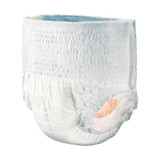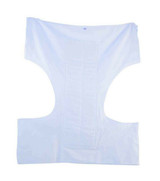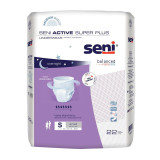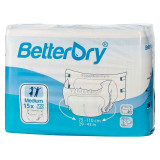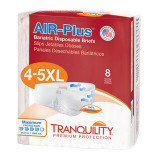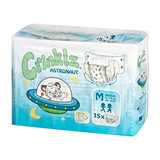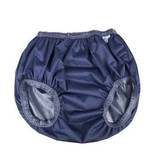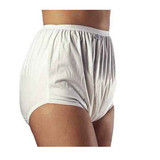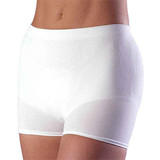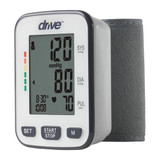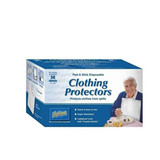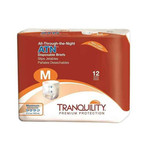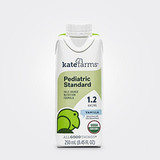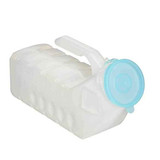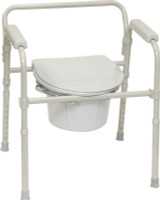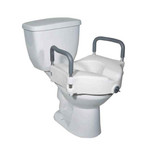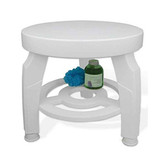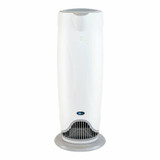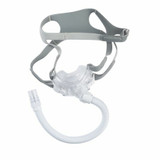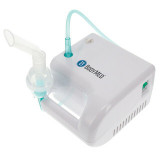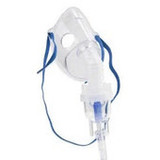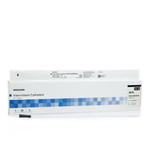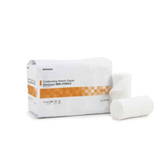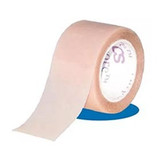
The Caregiver Guide – Constipation Prevention and Treatment
Most of what we write about relates to things that affect older people, sometimes almost exclusively older people. And when we talk about illnesses and a decline in overall health and well-being, we talk primarily about older people. However, there is one condition that isn’t limited to any one group of people; constipation.
Almost everybody will experience constipation at least once during their lifetime. In fact, a report by Dulcolax suggests that this may be as many as 80% of people. Other estimates are even higher. Of course, some people are cursed with constipation. A 2020 National Library of Medicine survey found that between 9% and 20% of adults experience chronic constipation. And this figure doubles for over 60s.
Constipation is common, it’s uncomfortable, and it affects many people. It is, however, more prevalent among older adults. In most cases, it can cause pain, bloating, nausea, and difficulty passing stools. Constipation can also lead to serious complications like hemorrhoids, anal fissures, fecal impaction, and bowel obstruction. It’s important, therefore, to understand how to prevent and treat constipation to maintain overall health and quality of life.
Understanding Constipation
The generic definition of constipation is having fewer than three bowel movements per week or having hard, dry, or small stools that are difficult or painful to pass. Some common symptoms of constipation are:
- Straining during bowel movements
- A feeling of incomplete evacuation
- Abdominal discomfort or pain
- Loss of appetite
- Headache
- Fatigue
- Mood changes
Constipation can affect anyone, but some people are more at risk than others. These include:
- Older adults due to age-related changes in the digestive system, reduced mobility, and increased use of medications
- Women, due to hormonal changes during pregnancy and menopause
- People with low-fiber diets, dehydration, or sedentary lifestyles
- People with medical conditions that affect the nerves or muscles of the bowel, such as diabetes, Parkinson’s disease, multiple sclerosis, stroke, spinal cord injury, or irritable bowel syndrome
- People who take certain medications that can cause constipation, such as opioids, antidepressants, antacids, iron supplements, calcium channel blockers, or diuretics
Causes of Constipation
The causes of constipation can be broadly categorized into functional and organic. Functional constipation is most common and occurs when the normal movement of the bowel is slowed down or disrupted by lifestyle factors or medications. Organic constipation occurs less commonly when there is a physical obstruction or abnormality in the bowel that prevents the passage of stools.
Common causes of functional constipation are:
- Low-fiber diet: Fiber is an indigestible carbohydrate that helps to add bulk and moisture to the stools. A low-fiber diet can result in hard and dry stools that are difficult to pass. The recommended daily adult fiber intake is 25 grams for women and 38 grams for men.
- Dehydration: Water is essential for keeping the stools soft and lubricated. Dehydration can occur when the body loses more fluid than it takes in, such as from sweating, vomiting, diarrhea, fever, or excessive alcohol or caffeine intake. Dehydration can cause the stools to become hard and dry and increase the risk of constipation.
- Lack of physical activity: Physical activity helps to stimulate the muscles of the bowel and promote regular bowel movements. Lack of physical activity can lead to a sluggish bowel and constipation. This can be a problem for older adults with reduced mobility.
- Irregular bathroom habits: Ignoring the urge to have a bowel movement can lead to constipation by weakening the signals from the brain to the bowel and allowing the stools to become harder and drier in the colon. Establishing a regular bathroom routine and responding to the natural urge to defecate is important.
- Stress: Stress can affect the nervous system and cause changes in the hormones that regulate the bowel function. Stress can also affect a person’s eating habits and physical activity levels and can cause diarrhea or constipation, depending on each individual’s reaction.
- Other factors: Some other factors that can contribute to functional constipation are travel, jet lag, changes in routine or environment, abuse of laxatives, or psychological issues such as depression or anxiety.
Some of the most common causes of organic constipation are:
- Structural abnormalities cause narrowing or blockage of the bowel, for example tumors, polyps, diverticulitis, inflammatory bowel disease (IBD), colorectal cancer, or anal stenosis.
- Neuromuscular disorders affect the nerves or muscles of the bowel. These require specialist medical treatment and are thus beyond the scope of this article.
- Endocrine disorders affect the hormones that regulate bowel function. These include diabetes mellitus, hypothyroidism and hypercalcemia, among others. They also require specialist treatment and are not discussed in this article.
Lifestyle Changes to Prevent and Treat Constipation
The first line of treatment for constipation is to make simple lifestyle changes that can help improve bowel function and prevent constipation. These include:
- Increasing fiber intake: Fiber can be found in fruits, vegetables, whole grains, nuts, seeds, and legumes. Or taken as a supplement such as psyllium, methylcellulose, or wheat bran.
- Staying hydrated: Water keeps the stools soft and lubricated. Try to drink at least eight glasses of water per day, or more if sweating, exercising, or taking medications that can cause dehydration. Fluids such as juices, soups, teas, or milk also help to hydrate the body. Avoid or limit alcohol and caffeine as they can have a diuretic effect and cause dehydration.
- Getting regular exercise: Physical activity stimulates the bowel muscles and helps to promote regular bowel movements. Experts recommend at least 150 minutes of moderate-intensity aerobic exercise per week, such as walking, jogging, cycling, or swimming. Exercise also helps to reduce stress, improve mood and enhance overall health and well-being.
- Establishing a bathroom routine: As far as possible, stick to a regular bathroom routine and respond to the natural urge to defecate. Set aside a specific time each day, preferably after a meal or a hot drink, to have a bowel movement. It may also help to use techniques that facilitate the passage of stools, such as massaging the abdomen or placing the feet on a footstool or a book while sitting on the toilet. Use a lubricant such as petroleum jelly or mineral oil to ease the friction, if necessary.
- Other tips: Some other tips that can help to prevent and treat constipation are:
- Avoid foods that can cause constipation, such as processed foods, cheese, white bread, rice, or bananas.
- Eat foods that stimulate bowel movement, such as prunes, kiwi, flaxseeds, or yogurt.
- Chew food well and eat slowly.
- Do not smoke or use tobacco products.
- Limit or avoid laxatives unless prescribed by a doctor.
Medical Treatments for Constipation
When lifestyle changes alone aren’t enough, you could try some of these medical treatments.
- Laxatives: Laxatives are medications that soften the stools and stimulate the bowel movement. There are different types of laxatives that work in different ways:
o Bulk-forming laxatives: These are fiber supplements that absorb water and increase the size and weight of the stools. They help to create a regular bowel movement and prevent constipation. They should be taken with plenty of water and may take several days to work.
- Osmotic laxatives: They draw water into the colon and increase the fluidity of the stools. They help to soften the stools and make them easier to pass. They may cause gas, bloating, cramping, or dehydration and should be used with caution in people with kidney problems.
- Stimulant laxatives: These stimulate the colon nerves and muscles and increase bowel contractions. They help to speed up the passage of stools and relieve constipation. They may cause abdominal pain, diarrhea, electrolyte imbalance, or dependence and should be used sparingly and for short periods.
- Stool softeners: These substances moisten the stools and make them easier to pass. They help to prevent straining and reduce the risk of hemorrhoids or anal fissures. They may take several days to work and should be used with plenty of water.
- Lubricant laxatives: These substances coat the stools and the bowel lining with a slippery film making them easier to pass. They help to prevent straining and reduce the risk of hemorrhoids or anal fissures. They may cause leakage, malabsorption of fat-soluble vitamins, or pneumonia if aspirated and should be used with caution in older adults or people with swallowing problems.
- Enemas and suppositories: Inserted into the rectum, they stimulate the bowel movement by causing irritation, distension, or lubrication. They help to evacuate the lower part of the colon and relieve constipation. They may cause dehydration, electrolyte imbalance, rectal irritation, or dependence and should be used sparingly and for short periods.
Laxatives should be used only as a last resort and under the guidance of a doctor. They can have side effects, interactions, contraindications, and complications if used incorrectly or excessively. Sometimes, they can cause a rebound effect, where the bowel becomes dependent on them and stops working normally without them. Therefore, use laxatives only when necessary, in the lowest effective dose, and for the shortest possible time.
- Prescription medications: You may have to resort to prescription laxatives for chronic or severe constipation that does not respond to lifestyle changes or over-the-counter laxatives. They work by increasing the fluid secretion in the colon, enhancing the motility of the bowel, or blocking the pain signals from the rectum. They can also cause diarrhea, nausea, abdominal pain, headache, or opioid withdrawal symptoms and should be used only under the supervision of a doctor.
- Biofeedback training: This type of behavioral therapy can help to treat constipation caused by pelvic floor dysfunction. Pelvic floor dysfunction is a condition where the pelvic floor muscles do not coordinate properly and interfere with the normal passage of stools. Biofeedback training involves using sensors and feedback devices to monitor and teach the patient how to correctly relax and contract the pelvic floor muscles during defecation. Biofeedback training can improve bowel function and reduce the need for laxatives or surgery.
- Surgery: This is a last resort for treating constipation caused by structural abnormalities or severe nerve or muscle damage in the bowel. Surgery involves removing part or all of the colon or rectum and creating an artificial opening for stool elimination. Surgery can have serious risks and complications, such as infection, bleeding, leakage, or bowel obstruction and should be considered only after exhausting all other options.
Special Considerations for Older Adults
Older adults are more prone to constipation due to age-related changes in the digestive system, reduced mobility, increased use of medications, and other factors. Treatment may also be more complicated due to, amongst others, a reduction in mobility or possible interactions between laxative therapy and other chronic medications. Other preventative strategies include:
- Adapting diet as metabolism slows: As people age, their metabolism slows down, and they need fewer calories to maintain weight. However, they still need adequate fiber, water, vitamins, minerals, and other nutrients to keep their bowel function healthy. Maintaining a healthy, balanced diet is as important as ever.
- Staying active and mobile within physical limitations: Physical activity helps to stimulate the muscles of the bowel and promote regular bowel movements. Aim for at least 150 minutes of moderate-intensity aerobic exercise per week, such as walking, jogging, cycling, or swimming. Try to include strength training exercises twice weekly to maintain muscle mass and bone density. Be careful to stay within the limits of your patient’s capabilities.
- Ensuring proper hydration: Water is essential for keeping the stools soft and lubricated. However, older adults may have reduced thirst sensation or difficulty swallowing, preventing them from drinking enough water. Try to see that they drink at least eight glasses of water or other fluids. Just take it easy on caffeine and alcohol.
- Managing medications: Older adults are more likely to take multiple medications that can cause constipation as a side effect. These include opioids, antidepressants, antacids, iron supplements, calcium channel blockers, or diuretics. It’s a good idea to review their medications with their doctor and pharmacist, who may recommend switching to alternative drugs that do not cause constipation or lowering the dose or frequency of the ones that do. Remember to include over-the-counter and herbal remedies in these reviews.
- Coping with changes like loss of appetite or reduced mobility: Older adults may experience changes in their appetite or mobility due to aging, illness, or psychological factors affecting their bowel function. For example, they may lose interest in food or have difficulty chewing or swallowing, leading to malnutrition, dehydration or disruption of digestive function. Keep an eye on eating habits and appearance. If you notice signs of weight loss or malnutrition, you must address them immediately to identify the underlying cause.
- Seeking medical advice about persistent issues: Constipation problems may indicate a serious underlying condition and could lead to complications if not treated properly. Seek medical advice if your patient has any of the following signs or symptoms:
· Constipation that lasts longer than three weeks
· Constipation that is accompanied by severe pain, bleeding, weight loss, fever, or vomiting
· Constipation that does not respond to lifestyle changes or laxatives
· Constipation that alternates with diarrhea
· Constipation that is caused by a new medication or a change in medication
· Constipation that is associated with a history of colon cancer or inflammatory bowel disease
Conclusion
Constipation is very common, and it can vary from being an occasional nuisance to something that requires lifestyle changes or treatment or, in extreme cases, surgical intervention. However, in many cases, proactive attention to lifestyle, diet and exercise levels can go a long way to avoiding constipation or minimizing the duration and discomfort of episodes.
As a caregiver, there are many ways you can help your patient or loved one deal with constipation, whether by preventing it or treating it. It’s not a matter of when you will need to confront constipation; it is a matter of when or how frequently. Understanding the causes or prevention and treatment options will make it a lot easier for you to cope when you need to deal with it.
We hope this article has provided that understanding and given you more insight into coping with this common condition. For any additional support and advice on products that will help you manage, contact LL Medico. We have a wide range of the best products at the best prices. Whether it be nutritional supplements, over-the-counter constipation relief or assistive devices for exercise, our experienced team is only a call or an email away. Call us at (855) 422-4556 or email [email protected].
Remember, “You are not alone in this journey. There are millions of caregivers around the world who share your struggles and joys. There are also many resources and support groups that can offer you guidance and comfort. You can reach out to them anytime you need.” (Author Unknown).




